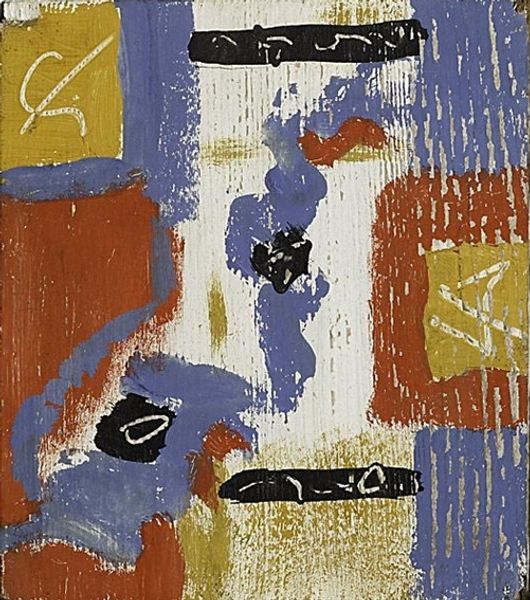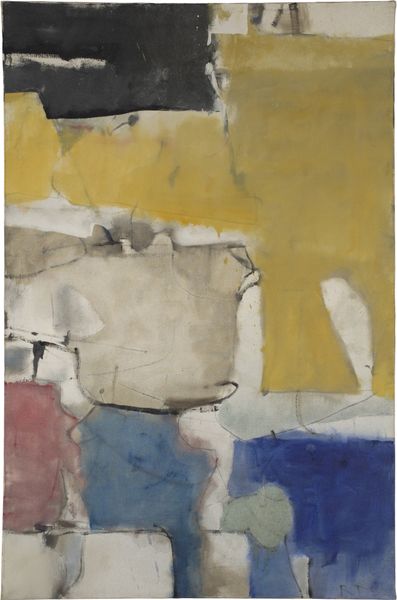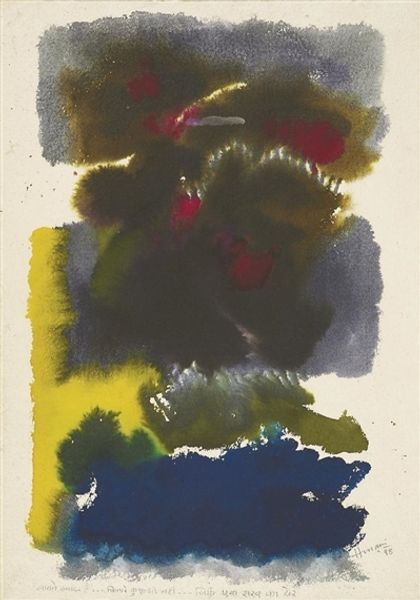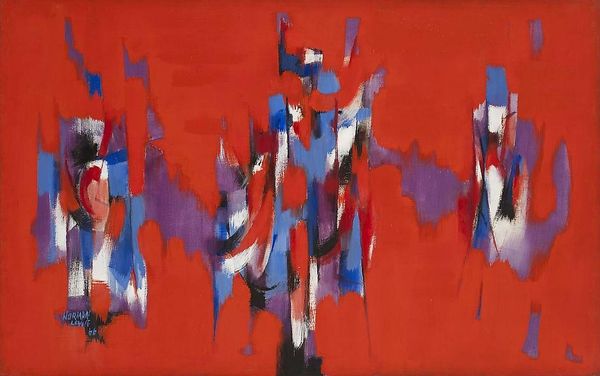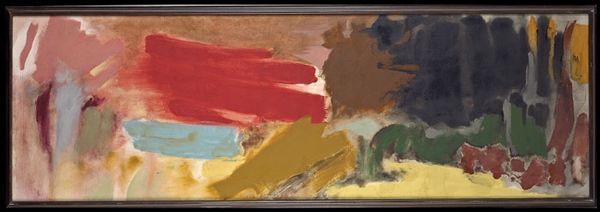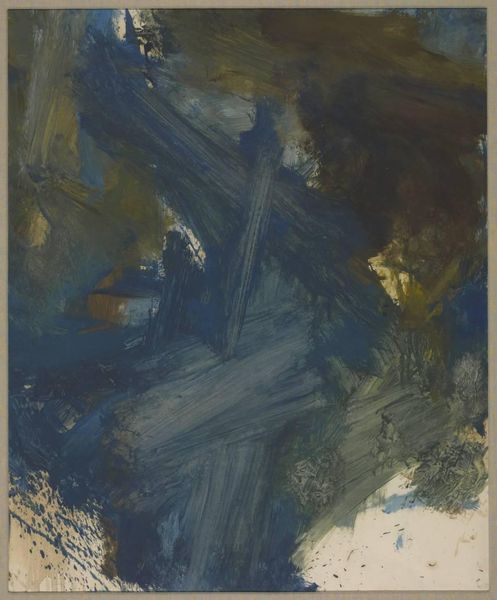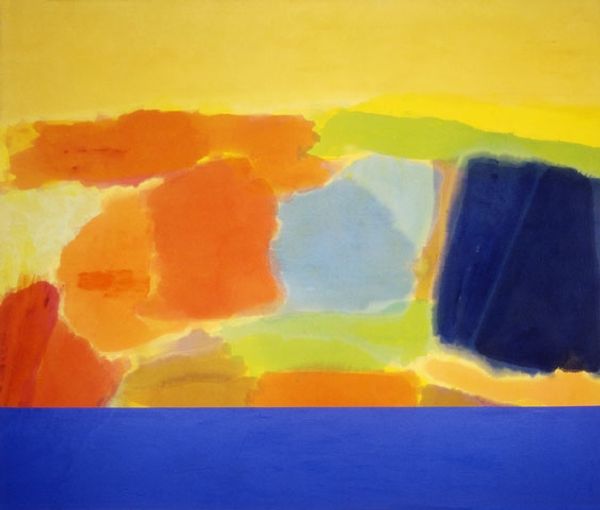
oil-paint, acrylic-paint
#
abstract painting
#
oil-paint
#
constructivism
#
acrylic-paint
#
form
#
oil painting
#
acrylic on canvas
#
geometric-abstraction
#
abstraction
Copyright: Public domain US
Editor: So, we’re looking at Alexander Rodchenko’s "Abstraction (Rupture)," created in 1920 using oil and possibly acrylic paint. There's this real sense of dynamism, almost like forces are colliding. What do you see as you consider the moment in which this artwork was made? Curator: It's crucial to remember the socio-political landscape of 1920 Russia. Rodchenko, deeply embedded in the Constructivist movement, was trying to forge a new visual language reflecting the revolutionary spirit. It wasn't simply about abstracting form; it was about tearing down old artistic structures, mirroring the societal upheaval around him. How do you see the composition working to communicate that "rupture?" Editor: Well, the contrasting colours and the way they’re brushed on feel very forceful, almost violent, suggesting a sudden and maybe unwelcome change. Curator: Exactly. And think about the institutions shaping art at that time. The state was becoming a primary patron, expecting art to serve the revolution. Rodchenko, while initially embracing this, later grappled with the role of art in a utilitarian society. Does the ambiguity in this abstract work perhaps signal a tension between artistic freedom and ideological demands? Editor: That's a great point. I hadn’t considered that it might be pushing against expectations in some ways, despite seemingly aligning with the movement. Curator: These early abstract works were, in a sense, experiments to redefine art’s function. Later, Constructivism shifted focus toward more practical applications, like design and propaganda, often at the expense of purely aesthetic exploration. "Abstraction (Rupture)" almost captures that transitional moment itself, don't you think? Editor: Yes, now I see how this piece exists in that liminal space. I’ve definitely learned something new today about considering historical contexts. Thanks! Curator: Absolutely, considering such artworks within a public dialogue reminds us of the ever changing role of art.
Comments
No comments
Be the first to comment and join the conversation on the ultimate creative platform.

